The defence technologies are evolving rapidly, in response to new threats and challenges. Modern conflicts demonstrate that success on the battlefield is contingent not only on the quantity of weapons, but also on innovations such as autonomous systems, artificial intelligence, cybersecurity and digital technologies.
Defence-Tech has become a high-tech industry in which key players implement cutting-edge developments, effecting a change in the balance of power on a global scale.
Global expenditure continues to rise rapidly, reflecting global threats and changes in defence policy approaches. While total military expenditure reached $1.83 trillion in 2020, this figure had already increased to $2.46 trillion by 2024, representing a significant increase of 34.4% over the past five years. The proportion of military expenditure to global GDP has also risen significantly, from 1.59% in 2022 to 1.94% in 2024.
The primary drivers of this growth were the active rearmament of NATO countries, advances in artificial intelligence, drones and cybersecurity, and increased defence budgets in response to geopolitical challenges. This increase is particularly evident in Europe and Asia, where countries are investing heavily in strengthening their defence capabilities. The chart below illustrates the changes in military expenditure over the past five years.
Key global trends in Defence-Tech
Artificial intelligence and the automation of combat systems
Artificial intelligence and automation have become integral components of modern weaponry. Autonomous drones and robotic systems carry out combat tasks without human intervention, while big data analytics are used to predict threats, analyse the battlefield and improve the efficiency of logistics. In 2023, investment in military AI increased by 30%, reaching $14 billion. The US Army is currently testing fully autonomous ground combat platforms that can operate independently, demonstrating the potential of this technology.
Drones and unmanned technology
Drones have become a key factor in modern conflicts, determining the effectiveness of combat operations. It is anticipated that the military drone market will exceed $35 billion by 2027.
A new trend is the use of swarms of drones that are able to autonomously coordinate their actions and change tactics in real time. For instance, the Israeli army is already using AI-guided kamikaze drones to strike mobile targets, significantly increasing accuracy and response speed.
Cybersecurity and information warfare
It is becoming increasingly apparent that cyberattacks are playing a pivotal role in military strategies. Military facilities and critical infrastructure are regularly subjected to hacker attacks, which have the potential to paralyse entire sectors of the economy. It is estimated that investment in military cybersecurity will reach $23 billion in 2024.
A new trend is the combination of physical and cyber defence, where attacks on servers are accompanied by real military actions, which significantly affects the strategy of warfare.
Radio-electronic warfare (REW) and electromagnetic influence
Modern electronic warfare systems are capable of jamming satellite signals, intercepting enemy drones and disabling combat electronics. The war in Ukraine has demonstrated that the use of unmanned aerial vehicles is significantly more challenging without powerful electronic warfare systems. This has led to the development of new technologies to protect against and counter electronic threats.
Dual-use technologies
Commercial technologies are increasingly being integrated into the military sphere. Starlink satellite internet is used for military communications, and civilian quadcopters are used for reconnaissance and strike operations. It is anticipated that in the forthcoming years, the military will continue to adapt civilian technologies for defence purposes, thereby significantly accelerating the development of Defence-Tech.
The world leaders in military expenditure: who invests the most in defence?
Global military expenditure is unevenly distributed and concentrated in a few key countries. According to the International Institute for Strategic Studies, the United States remained the leader in 2024, with the expenditure of $968 billion accounting for 39.3% of the global total.
In terms of defence budget, China (PRC) ranks second, spending $235 billion, which accounts for 9.6% of the global defence budget. Russia ranks third, spending $145.9 billion and accounting for 5.9% of the global total.
The top 10 also includes:
- Germany – $86.0 billion (3.5%)
- United Kingdom – $81.1 billion (3.3%)
- India – $74.4 billion (3.0%)
- Saudi Arabia – $71.7 billion (2.9%)
- France – $64.0 billion (2.6%)
- Japan – $53.0 billion (2.2%)
- South Korea – $43.9 billion (1.8%)
These ten countries collectively account for the majority of global military expenditure, highlighting their pivotal role in global defence policy.
The pie chart below shows the share of military expenditure by country in 2024.
Future directions for Defence-Tech development
Hypersonic missiles: a new level of strategic deterrence
Hypersonic missiles, which can travel at speeds exceeding Mach 5, are changing the balance of power in modern warfare. Their high manoeuvrability and speed make them extremely difficult to intercept using traditional air defence systems. The United States is developing the Glide Phase Interceptor (GPI), a new system designed to neutralise such threats. Meanwhile, China and several European countries are investing in developing their own hypersonic platforms. Military analysts predict that these technologies will become key strategic weapons by the 2030s.
Space defence
The increasing reliance on satellite technologies for communication, reconnaissance and navigation is driving the development of space defence. The US, EU and China are developing new systems to protect their own satellites and disable enemy space assets. Key innovations include laser technologies, electromagnetic systems and microsatellites capable of performing defence tasks autonomously. It is anticipated that countries will soon begin to establish specialised space units to oversee security in orbit.
Military biotechnology and neural interfaces
The development of biotechnology is contributing to the creation of new materials that increase soldiers' endurance, speed up wound healing and protect against extreme conditions. The latest exoskeletons are currently undergoing testing in the United States with a view to enhancing the physical capabilities of combatants. Two soldiers were able to lift a pallet weighing over 1.5 tonnes. In the absence of exoskeletons, the number of soldiers required to perform this task would increase. Concurrently, neural interfaces are being developed that allow interaction with military equipment without the need for a physical controller. For instance, DARPA is developing technologies for direct communication between the human brain and unmanned systems, with the potential to significantly enhance decision-making speed in combat scenarios.
Quantum technologies in defence
Quantum computing and quantum cryptography present new opportunities in the fields of military intelligence and cybersecurity. Quantum communication systems offer completely secure communication that is almost impossible to intercept or hack. Countries are actively researching quantum radars that can detect stealth technology, rendering even the most modern aircraft and submarines invisible.
Conclusion
Based on our analysis, we can draw several key conclusions regarding the development of Defence-Tech. The global defence industry is currently experiencing a period of significant transformation, with innovations in artificial intelligence, drones, cybersecurity and electronic warfare fundamentally changing the way wars are fought. The increasing use of dual-use technologies is blurring the line between civilian and military applications, creating new opportunities and challenges for governments and companies operating in this field.
The strategy of modern warfare, which is increasingly focused on technological dominance and the depletion of enemy resources, plays a special role in this context. As Valerii Zaluzhnyi, former Commander-in-Chief of the Armed Forces of Ukraine, emphasised, the modern technological revolution has already created ideal conditions for a war of attrition, where the key factor is not only military power, but also the state's ability to adapt, maintain stability and use innovative solutions.
“Therefore, this conclusion makes it possible to understand the primary and potentially the sole strategy for achieving victory in the future — the formation of a “vitality” system for the country. The experience our country has gained is invaluable to all our allies, as it helps them to understand what defence will look like in the near future,” — Mr. Zaluzhnyi emphasised.
Consequently, the development of advanced military technologies, when combined with the correct strategic vision, is becoming a determining factor in the successful conduct of current and future military campaigns.
BDO in Ukraine has a specialised Defence Industry Group that systematically monitors all key trends and transformations in the defence industry, from technological breakthroughs to changes in global approaches to security. Our objective is to deliver the highest level of specialised knowledge to companies in the defence and security sectors, in order to address the challenges of today.
Our team of experts focuses on providing clients with practical solutions that take into account market specifics, the regulatory environment and technological capabilities, as well as analytics. We also assist companies in:
- assessing risks and developing sustainability strategies;
- introducing innovations into production and logistics processes;
- adapting business models to new requirements of the defence sector;
- ensuring transparency and compliance with international standards.
Should you require a reliable partner to transform your defence capabilities, please do not hesitate to contact us.


























